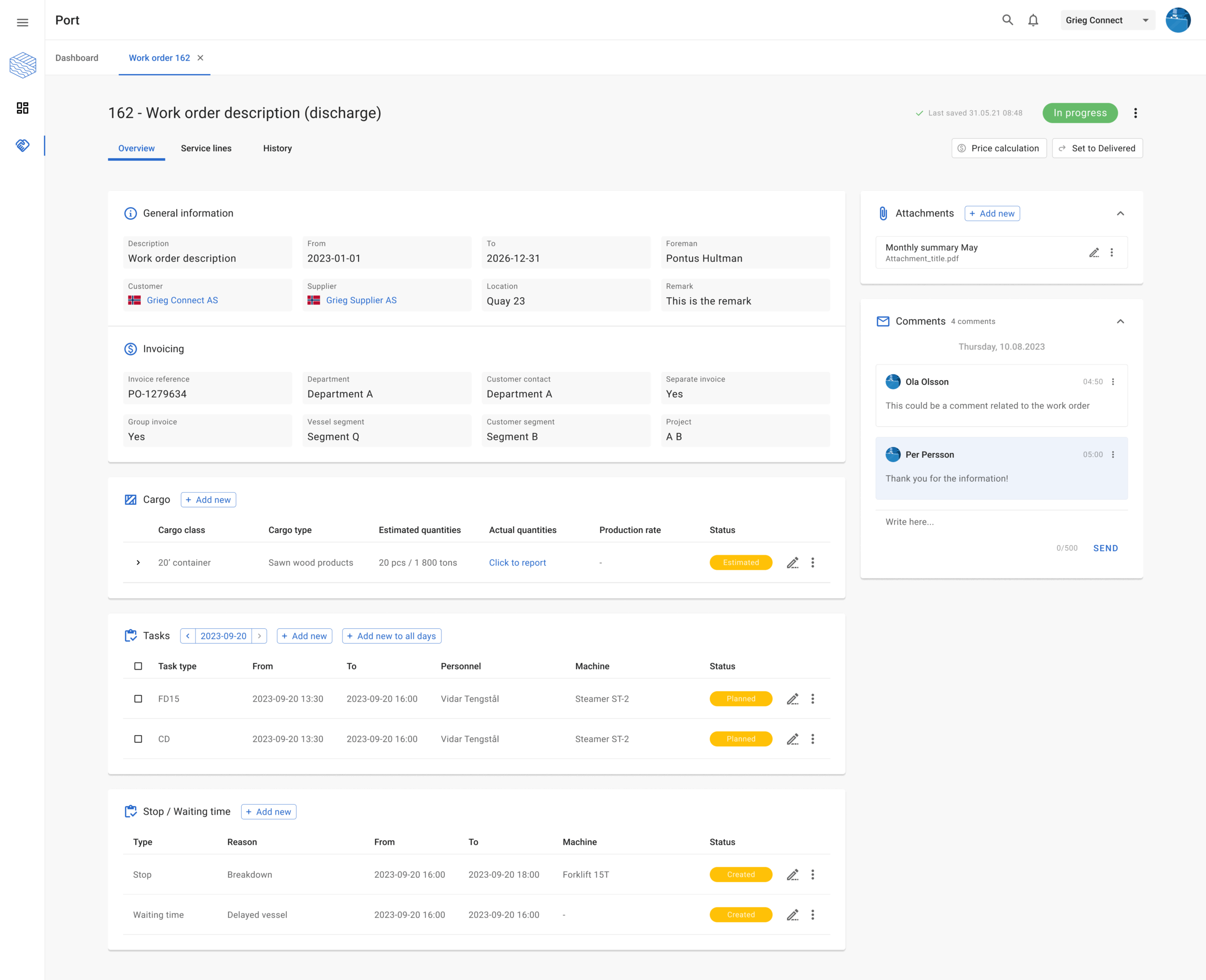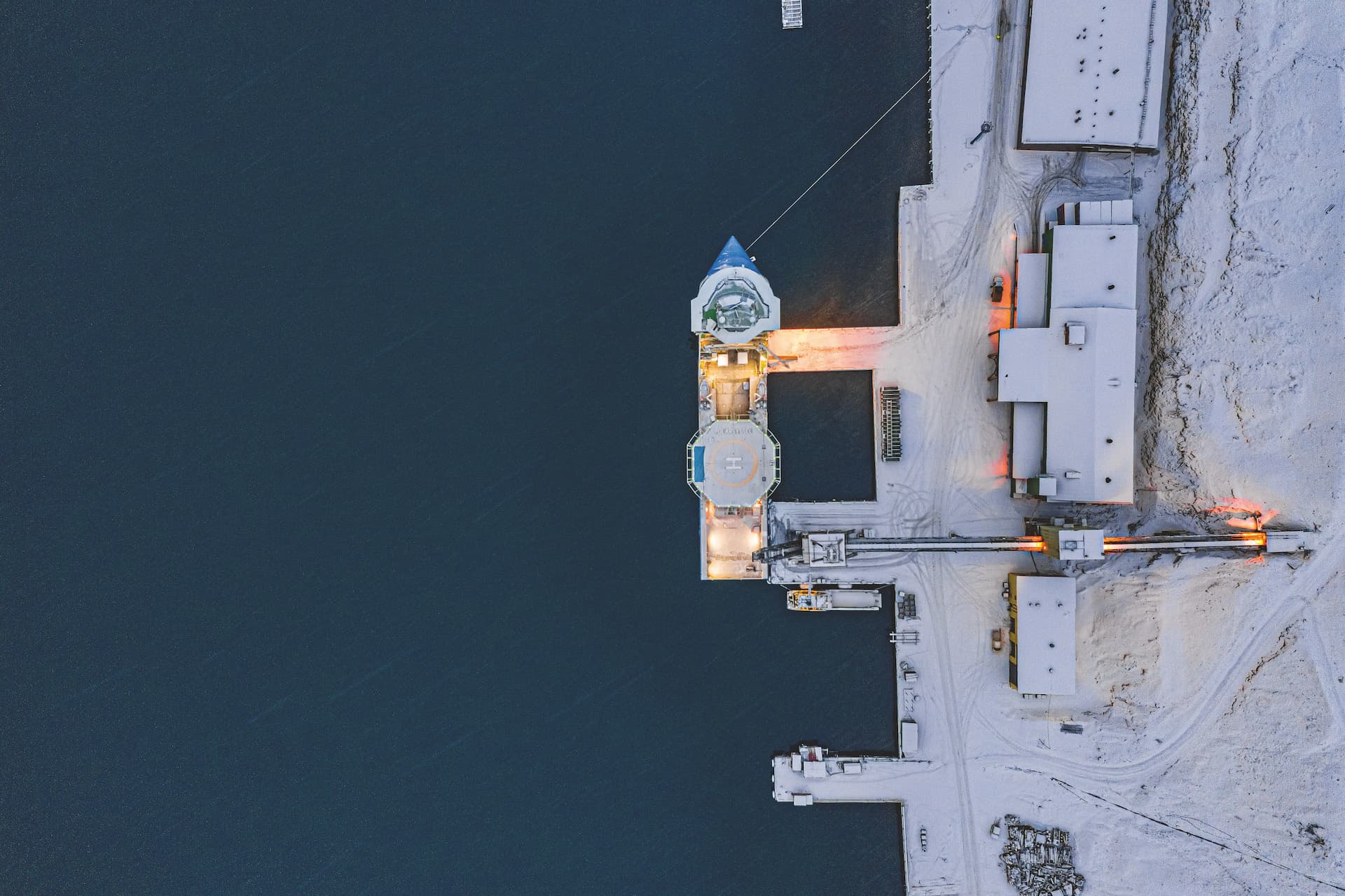Knowing what actually drives profit in a port has never been easy. Rentals, access cards, and certain services are often steady income streams, while port calls tend to be complex to estimate and even harder to follow up. This especially when cargo operations are included in a ton-based pricing model.
Profitable Resource Planning
When the agent reports preliminary cargo volumes, we make our best estimate. But things change: the vessel is loaded differently, weather delays occur, and we need to add more resources.
At what point do we lose our contribution margin? Can we justify overtime or waiting-time charges? Often not, or we simply don’t bother.
In daily operations, these decisions are often made under time pressure. A foreman standing on the quay must be able to decide whether it’s profitable to add an extra shift or wait until the next day. With the right decision support on a mobile device, you get instant insight into how the decision affects the contribution margin — and can act without risking profitability.

Image: visualisation of pre-calculation of contribution margin ahead of a port call
Decision Support on the Go
Grieg Connect Port has long provided strong analytics through the Insight report generator and our built-in Power BI solution. These tools are excellent for follow-up and yearly contract negotiations, where sales teams can rely on solid facts.
But sometimes that’s too late. We need decision support before we quote, negotiate a price, or allocate extra resources that might turn a good job into a loss.

Image: port call workorder view in the PMIS shift planning and resource planning model .
Pre-Calculation to Post-Analysis
With the new contribution margin feature, profitability becomes a part of the entire flow.
Before arrival, a pre-calculation is created and versioned. Standard costs are fetched from activity and resource templates.
When the AIS marks the vessel as “arrived,” actual costs from reported hours and used equipment replace planned values. Real costs meet real data, and TB1 is recalculated instantly.
Need to add an extra shift or piece of equipment? Press calculate contribution margin and see immediately whether the change makes financial sense. Each version is saved and can later be reviewed in Port
From Data to Learning
Once the vessel has departed and reporting is complete, the team can review all calculation versions in the morning meeting. What worked well? What could be improved?
If it was a project cargo, bring sales into the discussion. Learn together — and strengthen cooperation between operations and commercial teams.

Image: a view from a section of the BI report for resource planning BI
Sustainable and Profitable Operations
With the new contribution margin function and integrated BI, the port gets a shared tool where operations, finance, and sales see the same numbers. This creates a common understanding of profitability in every port call and lays the foundation for the data-driven port of the future.
Running a port profitably often leads to a more sustainable operation. Well-planned operations use fewer resources, reduce emissions, and minimize costly unplanned overtime. It’s good for the port, the region, and the people who make it all possible.
Want to learn more about how the shift and resource planning module can strengthen your port? Contact our commercial team. our commercial team
